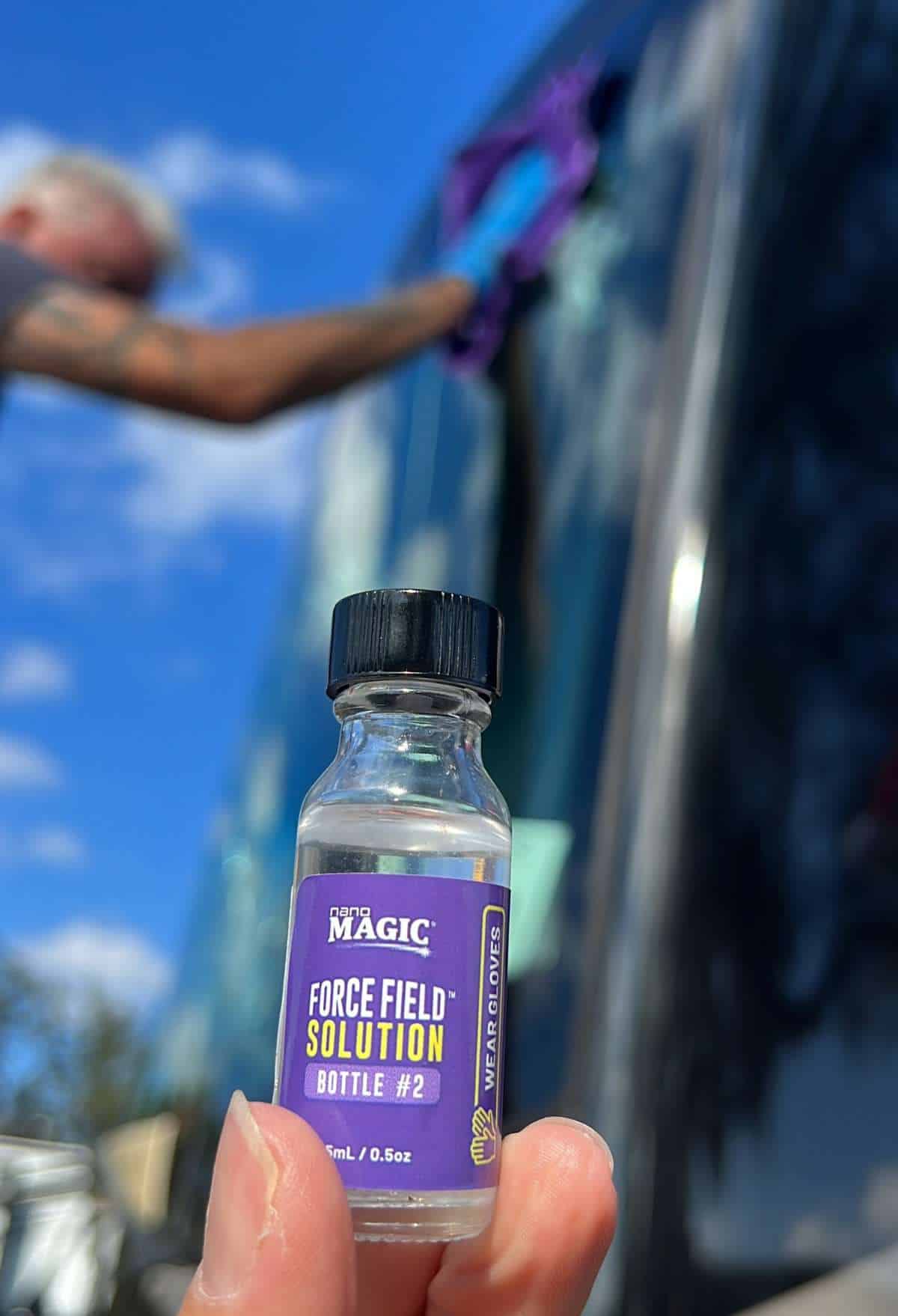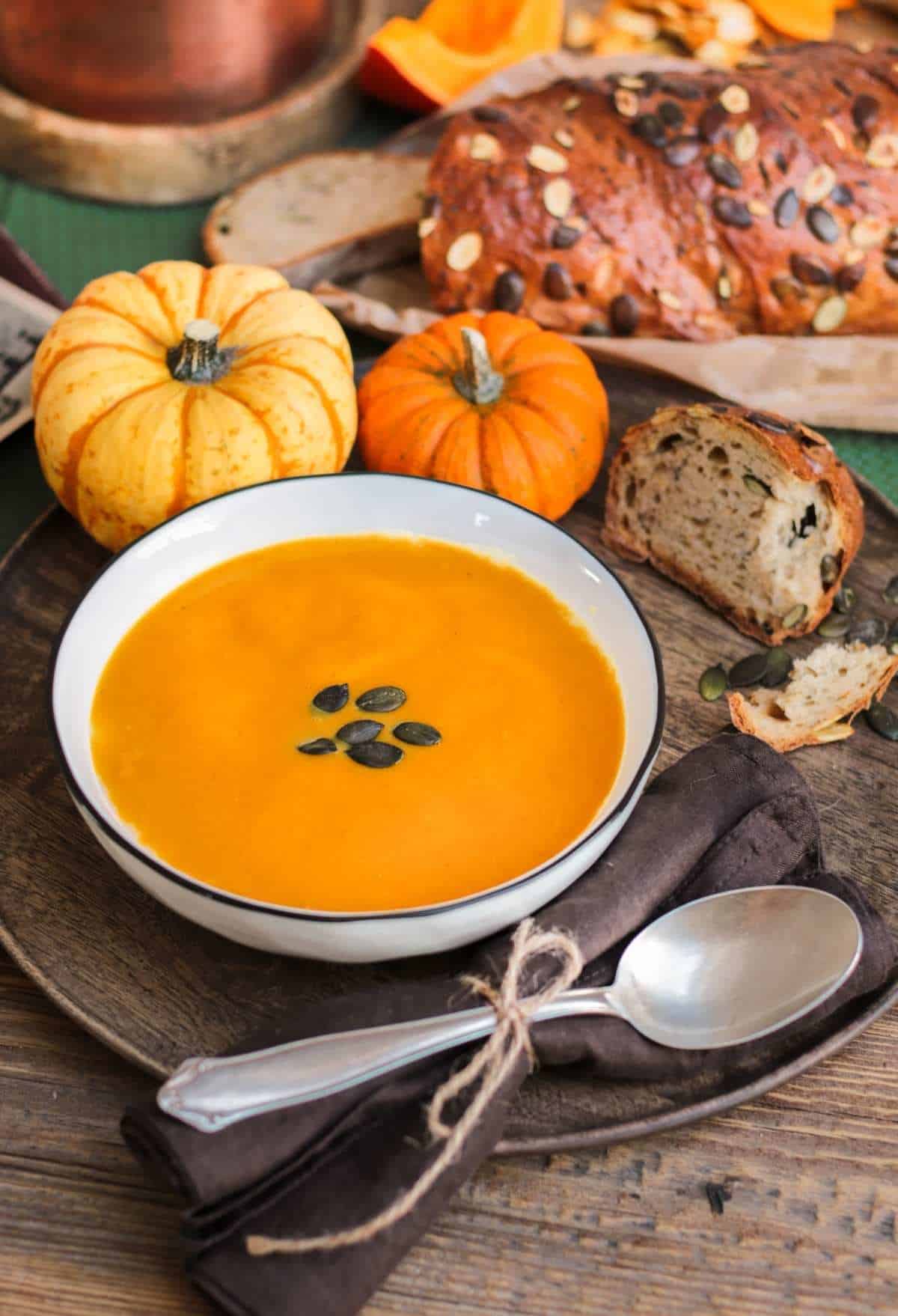When it comes to stone fruits, nectarines and peaches are two of the most popular varieties.
While they may look similar at first glance, there are actually a few key differences between the two.
Understanding the differences between nectarines and peaches can help you choose the right fruit for your needs and preferences.
One of the most obvious differences between nectarines and peaches is their skin.
Peaches have a fuzzy skin that can be a bit tricky to remove, while nectarines have a smooth skin that is easy to peel. Another difference is the flavor.
Nectarines are often described as slightly sweeter and more aromatic than peaches, which can have a more subtle taste. However, the flavor can vary depending on the specific variety and ripeness of the fruit.
Understanding Peaches and Nectarines
If you're a fan of stone fruit, you've probably enjoyed both peaches and nectarines. These two fruits are similar in many ways, but they do have some key differences. Here's what you need to know to tell them apart.
Both peaches and nectarines are members of the Prunus genus, which also includes other stone fruits like plums, cherries, and apricots. They're also both part of the rose family, which might surprise you if you've never thought of fruit trees as being related to flowers.

One of the most obvious differences between peaches and nectarines is their skin. Peaches have a fuzzy skin, while nectarines are smooth. This is due to a genetic mutation that affects the expression of a single gene. Interestingly, nectarines are actually a type of peach, but they have a different version of this gene that causes their skin to be smooth.
In terms of flavor, peaches and nectarines are quite similar. They both have a sweet, juicy flesh that can range from yellow to white in color. Some people find that nectarines have a slightly more intense flavor, but this can vary depending on the specific variety and growing conditions.
When it comes to texture, nectarines tend to be slightly firmer than peaches. This can make them easier to slice and dice for use in recipes. However, some people prefer the softer texture of peaches, especially when they're eating them fresh out of hand.
Overall, both peaches and nectarines are delicious, healthy fruits that are great additions to your diet. Whether you prefer the fuzziness of a peach or the smoothness of a nectarine, you can't go wrong with either one.
Physical Characteristics

When it comes to physical characteristics, there are a few key differences between nectarines and peaches. In this section, we'll take a closer look at the size and skin, color and flesh, and stone type of these two stone fruits.
Size and Skin
Peaches and nectarines are both similar in size, typically ranging from 2-3 inches in diameter. However, there is one key difference in their skin. While peaches have a fuzzy skin, nectarines have a smooth skin. This is due to a genetic mutation that gives nectarines their smooth skin. The skin of a nectarine is also slightly firmer and more delicate than that of a peach.
Color and Flesh
Another key difference between peaches and nectarines is the color of their flesh. Peaches have either white or yellow flesh, while nectarines always have yellow flesh. In terms of texture, nectarines have a slightly firmer texture than peaches, but both are generally considered to be juicy and sweet.
Stone Type
The stone, or pit, of a peach or nectarine can also vary in type. There are three main types of stone: freestone, clingstone, and semi-freestone. Freestone peaches and nectarines have a stone that easily separates from the flesh, making them easier to eat and prepare. Clingstone peaches and nectarines have a stone that is tightly attached to the flesh, making them more difficult to prepare. Semi-freestone peaches and nectarines have a stone that is partially attached to the flesh.
Overall, while there are some physical differences between nectarines and peaches, both are delicious and nutritious stone fruits that can be enjoyed in a variety of ways. Whether you prefer the smooth skin and firm texture of a nectarine or the fuzzy skin and juicy flesh of a peach, both are great choices for a healthy snack or dessert.
Flavor and Texture
When it comes to flavor and texture, nectarines and peaches have some similarities but also some notable differences.
Flavor: Both nectarines and peaches have a sweet and juicy flavor, but nectarines tend to have a slightly more intense flavor profile. This is due to their higher sugar content and more pronounced tartness. Peaches, on the other hand, have a milder sweetness and a more delicate flavor.
Texture: Nectarines and peaches both have a soft, juicy texture, but there are some differences. Nectarines are typically firmer and denser than peaches, with a slightly more velvety texture. Peaches, on the other hand, have a softer, more delicate texture that can almost melt in your mouth when perfectly ripe.
Sweetness and Tartness: As mentioned earlier, nectarines tend to be sweeter and more tart than peaches. This can make them a great choice for baking or cooking, as their flavor can stand up to other strong flavors. Peaches, on the other hand, are a great choice for eating fresh or using in more delicate recipes.
Acidity: Both nectarines and peaches have a slightly acidic taste, but nectarines tend to be more acidic than peaches. This can make them a great choice for balancing out sweeter flavors in a dish.
Overall, the flavor and texture differences between nectarines and peaches are relatively subtle, but they can have a big impact on the dishes you choose to use them in. Whether you prefer the slightly more intense flavor of a nectarine or the delicate sweetness of a peach, both fruits are a delicious and healthy choice.
Nutritional Profile
When it comes to nutrition, both nectarines and peaches are healthy choices. They are low in calories, high in fiber, and rich in vitamins and minerals. In this section, we will compare the nutritional profiles of nectarines and peaches.
Vitamins and Minerals
Both nectarines and peaches are good sources of vitamins and minerals. They are particularly high in vitamin C and potassium. Vitamin C is an important antioxidant that helps protect your cells from damage caused by free radicals. Potassium is essential for maintaining healthy blood pressure and heart function.
Nectarines and peaches also contain vitamin A, iron, and other vitamins and minerals. Vitamin A is important for eye health, while iron is essential for healthy blood cells.
Calories, Protein, and Carbohydrates
Nectarines and peaches are both low in calories and high in fiber. A medium-sized nectarine contains around 60 calories and 2 grams of fiber, while a medium-sized peach contains around 70 calories and 2 grams of fiber.
Both fruits are also low in protein but contain some carbohydrates. Nectarines and peaches are good sources of natural sugars, including fructose and glucose. They are also rich in dietary fiber, which helps regulate blood sugar levels and promotes digestive health.
In conclusion, both nectarines and peaches are nutritious fruits that offer a range of health benefits. They are low in calories, high in fiber, and rich in vitamins and minerals. Whether you prefer nectarines or peaches, adding these delicious fruits to your diet is a great way to boost your overall nutrition.
Culinary Uses
Common Recipes
Both nectarines and peaches are versatile fruits that can be used in a variety of recipes. They can be eaten raw, cooked, or baked, and can be used in both sweet and savory dishes.
One of the most popular ways to use peaches and nectarines is in pies and cobblers. Peach cobbler is a classic Southern dessert that is made with fresh peaches, sugar, and a buttery biscuit topping. Nectarines can be used in place of peaches in this recipe for a slightly different flavor. You can also use peaches and nectarines to make fruit salads, jams, and even ice cream.
In addition to sweet recipes, peaches and nectarines can also be used in savory dishes. They can be grilled and served with a variety of meats, or used in salsas to add a sweet and tangy flavor. You can also use them in salads to add a burst of sweetness and texture.
Cooking Methods
When it comes to cooking with peaches and nectarines, there are a variety of methods you can use. They can be baked, grilled, sautéed, or even canned.
Baking is a popular method for making pies, cobblers, and other desserts. When baking with peaches and nectarines, it's important to use ripe fruit to ensure the best flavor and texture. You can also add spices like cinnamon and nutmeg to enhance the flavor.
Grilling is another great way to cook peaches and nectarines. Simply slice the fruit in half, brush with a little bit of oil, and grill over medium-high heat for a few minutes on each side. Grilled peaches and nectarines are delicious on their own, or you can use them in salads, salsas, or as a topping for grilled meat.
Sautéing is a quick and easy way to cook peaches and nectarines. Simply slice the fruit and sauté in a little bit of butter or oil until they are tender and caramelized. You can use sautéed peaches and nectarines as a topping for ice cream or yogurt, or serve them as a side dish with grilled meats.
Canning is a great way to preserve peaches and nectarines for later use. You can make jams, jellies, and even canned fruit that can be used in a variety of recipes throughout the year. When canning peaches and nectarines, it's important to use a tested recipe and follow proper canning procedures to ensure safety.
Buying and Storing
When buying nectarines and peaches, look for fruits that are firm but not hard with a smooth, unblemished skin. The color of the skin varies depending on the variety, but it should be vibrant and without any wrinkles or soft spots. You can also use your sense of smell to determine if the fruit is ripe. Ripe nectarines and peaches have a sweet and fragrant aroma.
If you're planning to eat the fruit right away, choose ripe nectarines and peaches that give slightly when you press them gently. However, if you're not planning to eat them immediately, choose fruits that are still firm and not quite ripe. You can ripen them at home by leaving them at room temperature for a few days. To speed up the ripening process, place them in a paper bag with a ripe banana or apple.
As with most fresh fruits, the best way to store peaches and nectarines is to eat and use them as soon as they're ripe. However, if you need to store them for a few days, keep them at room temperature until they're fully ripe, then transfer them to the refrigerator. They should last for up to a week in the fridge.
If you're buying nectarines and peaches in season, consider visiting your local farmers market. Not only will you find a wider variety of fresh, locally grown fruits, but you'll also be supporting your local farmers. Plus, the fruits are likely to be more flavorful and nutritious since they're picked at their peak ripeness.
In summary, when buying nectarines and peaches, choose fruits that are firm and unblemished with a sweet and fragrant aroma. If you're not planning to eat them right away, choose fruits that are still firm and not quite ripe and ripen them at home. Once they're ripe, store them in the refrigerator for up to a week. And if possible, buy them at your local farmers market for the freshest and most flavorful fruits.
Varieties and Regions
When it comes to varieties of peaches and nectarines, there are many to choose from. White peaches, yellow varieties, and white varieties are all popular options. Some popular types of peaches include the freestone, clingstone, and semi-freestone peaches. Each variety has its own unique flavor profile and texture.
In terms of regions, peaches and nectarines are grown all over the world, but the South is particularly known for its peach production. Georgia is often referred to as the "Peach State" and produces a significant amount of the country's peaches. Florida is also a major producer of peaches, with the season typically running from late March to early May.
Nectarines are also grown in the South, with Georgia and South Carolina being the top producers. The season for nectarines typically runs from mid-June to early September.
Yellow peaches are the most common variety of peach, but there are also white peaches available. White peaches are generally sweeter and less acidic than yellow peaches, with a more delicate flavor. Some popular white peach varieties include "Babcock," "Nectar," "Belle of Georgia," and "Arctic Supreme."
In terms of harvesting, freestone peaches are the easiest to work with as their pits are easy to remove. Clingstone peaches, on the other hand, have pits that are harder to separate from the flesh. Semi-freestone peaches fall somewhere in between, with pits that are partially attached to the flesh.
Overall, the choice between peaches and nectarines largely comes down to personal preference. Both are delicious and nutritious fruits that can be enjoyed in a variety of ways.
Genetic Background and Cultivation
When it comes to the genetic background of nectarines and peaches, they are very similar. In fact, nectarines are a genetic variant of common peaches. Both fruits belong to the rose family (Rosaceae) and are grown throughout the warmer temperate regions of both the Northern and Southern hemispheres. It is believed that nectarines were domesticated in China more than 4,000 years ago.
One of the main differences between nectarines and peaches is that nectarines have a gene variant that makes their skin smooth and firm, while peach skin has a characteristic fuzz. This gene variant is responsible for the difference in texture between the two fruits. Nectarines also tend to have a slightly firmer flesh than peaches.
When it comes to cultivation, both nectarines and peaches require similar care. They both grow on trees and prefer well-draining soil and full sun. They also require regular watering, especially during the growing season. It is important to prune the trees regularly to promote healthy growth and fruit production.
Nectarines are a bit more likely to be affected by diseases such as brown rot and bacterial spot. Therefore, it is important to take extra care when growing nectarines and to monitor them closely for any signs of disease or pests.
In terms of taste, both nectarines and peaches are sweet and juicy. They can be eaten fresh, cooked, or used in a variety of recipes. Nectarines are often used in desserts such as pies and cobblers, while peaches are commonly used in jams and preserves.
Overall, while nectarines and peaches may have some genetic and textural differences, they are very similar fruits when it comes to cultivation and taste.
Peaches and Nectarines in Comparison
When it comes to peaches and nectarines, there are both similarities and differences to consider. Here are some key points to keep in mind:
Similarities
- Both peaches and nectarines are stone fruits, meaning they have a hard pit in the center.
- They are both sweet and juicy, with a similar flavor profile.
- Both fruits are in season during the summer months, making them a popular choice for summer desserts and snacks.
- They are both low in calories and high in fiber, making them a healthy addition to your diet.
Differences
- The main difference between peaches and nectarines is their skin. Peaches have a fuzzy skin, while nectarines have a smooth skin.
- Nectarines are generally smaller and firmer than peaches.
- Nectarines tend to be slightly sweeter and tangier than peaches, with a more intense flavor.
- Peaches are more commonly used in baked goods and preserves, while nectarines are often eaten fresh.
When it comes down to it, the choice between peaches and nectarines often comes down to personal preference. If you prefer a sweeter, tangier flavor and don't mind a smooth skin, nectarines may be the way to go. If you prefer a slightly milder flavor and don't mind a fuzzy skin, peaches may be the better choice. Regardless of which fruit you choose, both are a delicious and healthy addition to your diet.
Frequently Asked Questions
How are nectarines different from peaches?
Nectarines and peaches are very similar fruits, but they have a few differences. The most noticeable difference is the skin. Nectarines have smooth skin, while peaches have fuzzy skin. Additionally, white nectarines and peaches are sweeter than yellow varieties. Nectarines are also slightly smaller and have a firmer texture than peaches.
What are the benefits of eating nectarines?
Nectarines are a great source of vitamins A and C, which are important for maintaining healthy skin and boosting your immune system. They also contain fiber, which can help with digestion and weight management. Nectarines are also low in calories, making them a great snack option.
What are some recipes that use nectarines?
Nectarines can be used in a variety of recipes, both sweet and savory. They can be grilled and served with a balsamic glaze, added to a fruit salad, or used in a smoothie. Nectarines can also be used in desserts, such as pies, tarts, and cobblers.
What is the nutritional value of a nectarine?
One medium-sized nectarine (140 grams) contains approximately 60 calories, 1 gram of protein, and 14 grams of carbohydrates. They are also a good source of vitamins A and C, as well as potassium and fiber.
Do nectarines and peaches taste the same?
Nectarines and peaches have a very similar taste, but nectarines are slightly sweeter and have a more intense flavor. This is because nectarines have a higher sugar content than peaches.
What is the difference between a nectarine and a peach tree?
The difference between a nectarine and a peach tree is that nectarine trees produce nectarines, while peach trees produce peaches. Nectarine trees also require slightly less chill time than peach trees, meaning they can grow in slightly warmer climates.




Leave a Reply